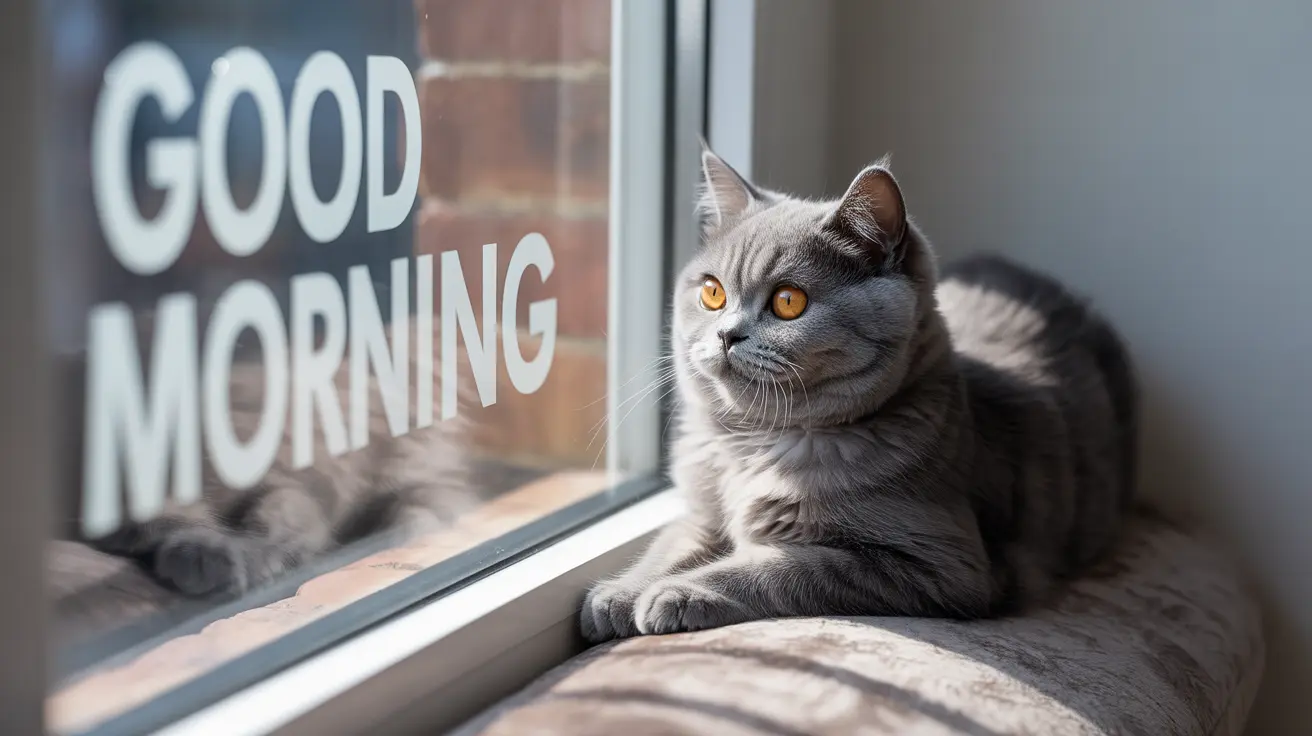Have you ever wondered how your cat seems to know exactly when it's dinner time, or why they wake you up at the same hour every morning? While cats don't read clocks or understand human measurements of time, research shows they do possess a sophisticated internal system for tracking the passage of time and anticipating regular events.
Let's explore how cats perceive time, what mechanisms they use to track it, and why understanding this aspect of feline behavior can help us become better pet parents.
The Biological Clock of Cats
Cats rely heavily on their circadian rhythm - an internal biological clock that operates on a roughly 24-hour cycle. This natural timing system helps regulate their sleep-wake patterns, feeding schedules, and activity levels throughout the day.
Unlike humans who consciously track minutes and hours, cats experience time through a combination of internal biological signals and environmental cues. Their bodies naturally respond to changes in light, temperature, and other environmental factors that indicate different times of day.
How Cats Track Daily Routines
While cats don't understand clock time, they excel at pattern recognition and routine tracking. They use various environmental markers to anticipate regular events:
- Morning light patterns
- Household sounds and activities
- Regular feeding times
- Owner's daily routines
- Specific smells associated with certain times of day
This sophisticated system allows cats to develop remarkably accurate timing behaviors, often appearing to know exactly when certain daily activities should occur.
The Science Behind Feline Time Perception
Research has shown that cats possess what scientists call "episodic-like memory," allowing them to remember the what, where, and when of significant events. This ability helps them create mental maps of their daily routines and anticipate future events based on past experiences.
Studies have demonstrated that cats can distinguish between different lengths of time and adjust their behavior accordingly. For example, they might wait longer to check their food bowl if their owner typically serves dinner later on certain days.
Environmental Cues and Time Awareness
Cats are particularly sensitive to environmental signals that help them track time:
- Changes in natural light
- Regular household sounds
- Temperature fluctuations
- Human activity patterns
- Familiar scents and sounds
These cues work together with their internal clock to create a comprehensive time-tracking system that's remarkably accurate, even if it's different from how humans perceive time.
Adapting to Schedule Changes
When routines change, cats may initially show signs of confusion or stress. This reaction demonstrates their strong reliance on consistent patterns for tracking time. However, most cats can adapt to new schedules within a few days to weeks, as their internal clocks reset to match new patterns.
Frequently Asked Questions
How do cats perceive the passage of time if they don't understand clocks or minutes?
Cats perceive time through their internal biological clock (circadian rhythm) and by recognizing patterns in their environment. They don't understand minutes or hours but can distinguish between different durations and anticipate regular events based on natural and household cues.
Can cats really anticipate daily routines like meal times and wake their owners accordingly?
Yes, cats are excellent at anticipating regular events through pattern recognition. They combine their internal biological clock with environmental cues to predict when certain activities should occur, often with remarkable accuracy.
What biological mechanisms help cats track time and adapt to daily cycles?
Cats use their circadian rhythm, which responds to light and dark cycles, along with other biological mechanisms in their brain that help process routines and sequences. Their prefrontal cortex plays a key role in timing and anticipation.
How do environmental cues like light and sounds influence a cat's sense of time?
Environmental cues serve as timing markers for cats. Changes in natural light, familiar sounds (like an alarm clock or food preparation), and regular household activities all help cats track the passage of time and anticipate events.
Why do cats get confused or stressed when their daily schedule or time zone changes?
Cats rely heavily on routine and consistent patterns to track time. When these patterns are disrupted, it can temporarily disorient their internal clock and cause stress until they adjust to the new schedule, typically within a few days to weeks.
Understanding how cats perceive time can help us create better routines and provide more consistent care for our feline friends. While their time perception differs from ours, it's no less sophisticated and plays a crucial role in their daily lives and behavior patterns.






